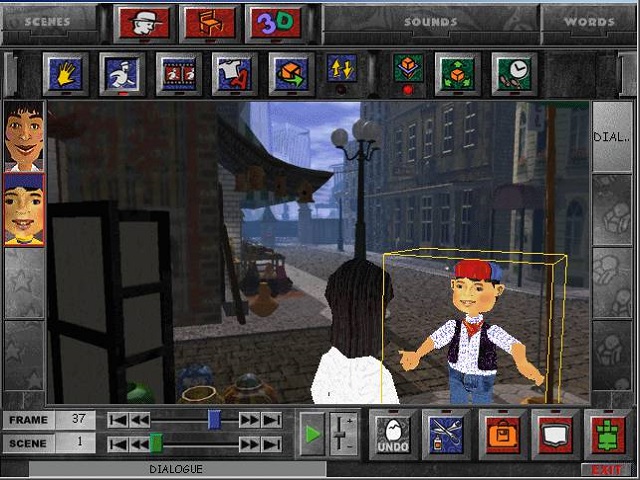
3:10 pm ET update: We've added details on features that 3D Movie Maker aficionados can expect now that the app has been open-sourced.
Original story: Back in 1995, the Microsoft Kids division of the company released a program called Microsoft 3D Movie Maker. The same year that the original Toy Story proved that feature-length 3D computer animation was feasible, people could install software on their home computers that could spit out crude-but-creative 3D animated movies at 6 to 8 frames per second.
Aside from releasing Doraemon and Nickelodeon-specific versions of Movie Maker later on, Microsoft never really returned to this software... until now. Microsoft Developer Division Community Manager Scott Hanselman announced yesterday that Microsoft was open-sourcing the code for 3D Movie Maker, posting it to Github in a read-only repository under an MIT license.
The code was released not because Microsoft has grand plans for 3D Movie Maker but because someone asked. Self-described "hardware/software necromancer" Foone Turing asked Microsoft to release the 3D Movie Maker source code back in April because they wanted "to expand and extend it." Hanselman and Microsoft Open Source Programs Office Manager Jeff Wilcox then worked with Microsoft's legal department to make it happen.
The 3D renderer used in 3D Movie Maker is called BRender, and it was used in mid-'90s Argonaut Software PC games like Carmageddon and FX Fighter. Turing was also given permission to issue the BRender code under the same MIT license as 3D Movie Maker back in early April after asking former Argonaut CEO Jez San for permission.
We asked Hanselman why Microsoft was taking the trouble to put the 3D Movie Maker code out there after all these years.
"Because there's never been an app like it," Hanselman told Ars. "Even now 25 years later, there is a community excited about this tool." He's not wrong. 3D Movie Maker still has a small but active enthusiast user base that is still putting out content I would politely describe as "surreal."
Open-sourcing the app could lead to all kinds of experimental forked versions, but Turing has specific updates that they also plan to release under an open source license. These improvements will include updated versions of the BRender engine and 3D Movie Maker that run natively on modern systems, and a "3D Movie Maker Plus" that removes the app's 256 color limit, improves audio support, adds native video export features, and more. The goal will be to expand the software's feature set while "keep[ing] it as simple and easy to use as the original."
3D Movie Maker has one more dubious accomplishment to its name: Dialog boxes in 3D Movie Maker are the first documented appearance of Comic Sans, which was developed for Microsoft Bob but wasn't ready when that software shipped. Comic Sans later conquered office signage everywhere thanks to its inclusion in the Windows 95 Plus! Pack, Internet Explorer, and other '90s-era Microsoft products.
reader comments
106